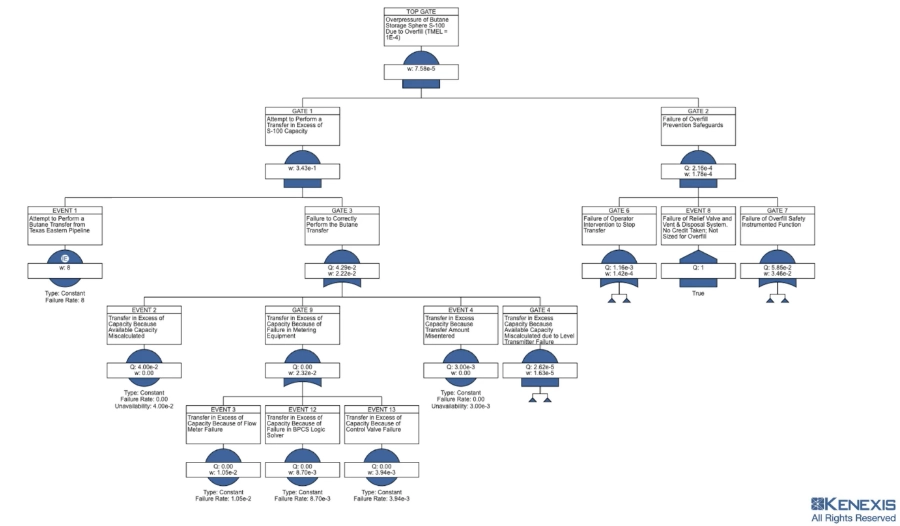Fault Tree Analysis (FTA) is particularly effective for analyzing complex systems where it is essential to examine combinations of failures. FTA is a top-down, deductive method that starts with a system failure (the top event) and traces potential causes through a hierarchical structure. This approach helps identify critical failure paths, quantify risks, and prioritize failure modes for system improvements. It is widely used to pinpoint minimal cut sets, assess the effectiveness of safety barriers, and guide safety improvements.
Several alternative and complementary methods are used alongside FTA in safety and reliability engineering to identify, analyze, and mitigate risks. Each method has its strengths and is suited to different types of analysis:
- Failure Modes and Effects Analysis (FMEA): Ideal for component-level failure analysis, FMEA is often used in the early design phases. It systematically identifies potential failure modes of individual components or subsystems and assesses their impact on the overall system.
- Event Tree Analysis (ETA): Excellent for evaluating the consequences of failures and the effectiveness of recovery actions, ETA starts with an initiating event and explores possible outcomes through a branching structure, assessing how safety barriers and recovery actions affect system outcomes.
- Bow-Tie Analysis: This method uses a central event, such as a hazard or accident, and visualizes fault paths leading to the event on one side, and event consequences and mitigations on the other. It is particularly useful for risk management and understanding safety barriers.
- Markov Analysis: A probabilistic method that models a system’s possible states and transitions, Markov Analysis is well-suited for systems where failures and repairs follow stochastic processes, particularly in systems with multiple operational states or repairable components.
- Layer of Protection Analysis (LOPA): A semi-quantitative risk assessment method, LOPA evaluates the effectiveness of safety layers or controls in preventing accidents by identifying risk scenarios, quantifying the risk reduction from each layer, and determining overall risk acceptability.
- Hazard and Operability Study (HAZOP): Commonly used in process industries, HAZOP is a qualitative technique that systematically examines system designs or operations to identify hazards, operability issues, and deviations from normal conditions, using “guidewords” to stimulate discussion about potential deviations and their consequences.
FTA is primarily used in safety-critical industries such as aerospace, nuclear energy, chemical processing, and manufacturing, where it systematically analyzes potential causes of system failures to identify conditions or event combinations that could lead to hazardous situations. The key purposes of using FTA include:
- Root Cause Identification: Pinpointing basic events that lead to system failures.
- Reliability Quantification: Measuring the probability of failure to assess risk.
- Modeling Complex Interactions: Understanding how different components interact and affect overall safety.
- Identifying Single-Point Failures: Highlighting critical points that require redundancy.
- Guiding Safety Improvements: Focusing on the most critical risks for mitigation.
- Evaluating Design and Maintenance: Analyzing how design or operational changes impact safety.
- Ensuring Compliance: Meeting regulatory standards and best practices.
- Improving Communication: Providing a clear visual tool for discussing safety concerns.
- Supporting Decision-Making: Helping manage risks with data-driven approaches.
- Prioritizing Failures: Addressing the most important failure modes for system improvement.
By James McGlone
Click here to learn about Arbor Fault Tree Analysis software from Kenexis.

